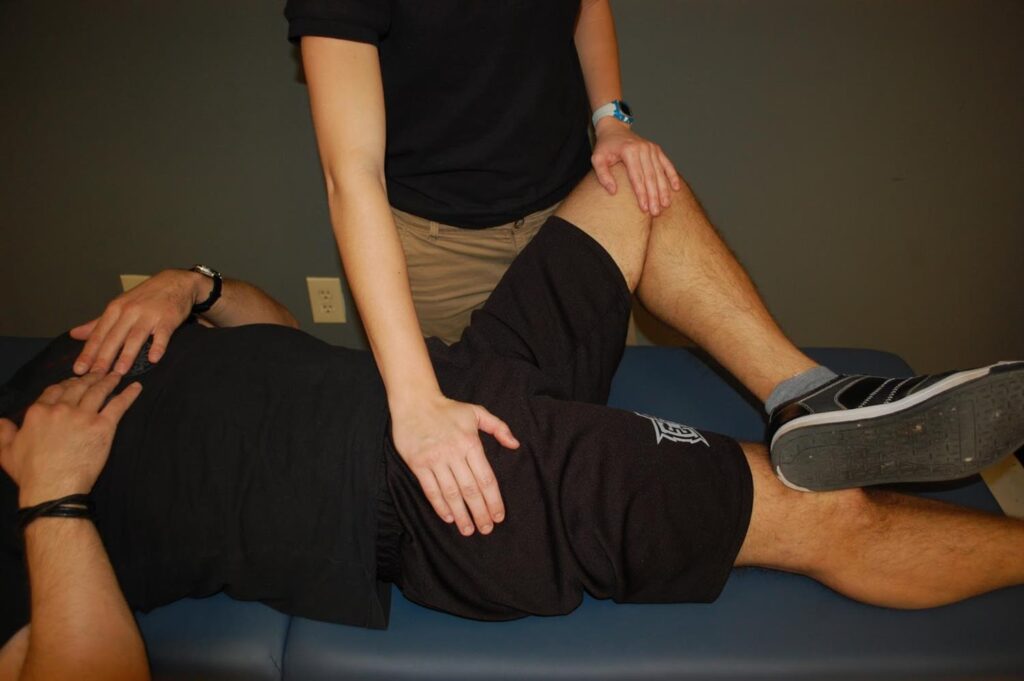Hip abductor tendon repair
Hip abductor tendon damage is a rare but debilitating complication of hip replacement surgery. Our doctors are experts at correcting this

At a glance
About
Corrective surgery for post-hip arthroplasty complications
Effective
Referrals
Not Needed
Booking
Instant-book option available
Cost
-
Lincolnshire £ 18,000
Nature of hip abductor tendon repair
Hip abductor tendon repair is a targeted surgical treatment designed to restore strength and stability in patients with torn or damaged tendons around the outer hip. These tendons, especially the gluteus medius and minimus, play a vital role in walking and maintaining balance. When injured, patients often experience pain, weakness, or a limp. The procedure involves reattaching the torn tendon to the greater trochanter using surgical anchors.
Common causes of hip abductor tendon injuries
Hip abductor tendon injuries often result from chronic overuse or degeneration, including:
Repetitive strain: Activities like walking, running, or standing for long periods can overwork the tendons.
Tendon tears: Partial or full-thickness tears of the gluteus medius or minimus tendons commonly occur with age or sudden injury.
Hip instability: Abnormal gait or poor biomechanics may increase tendon stress and cause damage.
Age-related wear: As tendons weaken with age, they become more prone to degeneration and tearing.
Diagnosis for hip abductor tendon repair
Diagnosis begins with a clinical assessment focusing on hip pain, walking ability, and muscle strength. Common symptoms include pain when lying on the affected side, limping, and difficulty lifting the leg sideways. A physical exam is used to evaluate gait, tenderness, and weakness. Imaging tools such as MRI scans are essential to confirm tendon tears, inflammation, or degeneration. If conservative treatments like rest, physiotherapy, or injections are ineffective, surgical repair may be recommended to restore normal function and relieve ongoing pain.
Suitable for
Hip replacement

Treatment overview
After hip surgery, abducted tissue (that is scar tissue, swelling or changed muscle length/tension) can interfere with the overall function of the muscles around the hip. This can lead to weakness or altered biomechanics, which can cause the Trendelenburg lurch/gait. The Trendelenburg lurch/gait is when the hip drops on the opposite side whilst working.
There are several approaches to repairing this, including muscle transfer, muscle and tendon sling, and bone tendon allograft. Dr Lee, at MSK Doctors, is an expert in hip abductor tendon repair post-arthroplasty surgery.

Benefits

Correction of Trendelenberg lurch

Reduces hip instability and pain

High patient satisfaction post-treatment
How to Pay
We offer a range of flexible payment options to make your treatment experience smooth and stress-free.
Paying for Yourself (Preferred Option)
Most patients choose to self-fund their treatment. We accept:
- Bank Transfers
- Credit/Debit Cards
- Cash (in person only)
Instalment Plans
We’ve partnered with GoCardless to offer interest-free instalment options. You can easily set up a Direct Debit to spread the cost of your treatment over time.
Finance Options
Looking for a financing plan? You can apply through Kandoo, our trusted finance partner.
- Instant online decision
- No impact on your credit score
- Multiple lenders for competitive rates
Private Medical Insurance (Limited Availability)
We work with a small number of approved insurance providers. However, due to restrictions from many insurers, not all treatments are covered. Please check with your insurer and speak to our team before booking to avoid disappointment.
The booking process
Online booking/call
Use our Calendly to book an initial consultation, or give us a call.
01
Consult
Our doctors might request you arrange a scan before your initial consultation. Or, they’ll chat with you (face to face or online) and recommend a scan after your initial consultation, if they think you need one.
02
Treatment
Once your scan results have been reviewed, and your doctor has explained your options, you will be booked in for treatment.
03
Rehab
Following your treatment, your doctor will give you rehab recommendations.
04
Follow up
You will be booked in for a follow-up consultation, so your doctor can check your progress. You might need further rehab after this consultation.
05
Discharge
Once your doctor is happy with your recovery, you will be discharged. After discharge, we are always here for further questions or support, should you need it.
06
Frequently Asked Questions
How do I know if this treatment is suitable for me?
The bikini/SPAIRE approach is typically recommended for younger, more active patients or those who need faster recovery times and increased mobility. Our MSK Doctors will be able to talk through your suitability during a consultation.
What is the recovery time?
Patients who receive the bikini/SPAIRE hip replacement will usually be on their feet within 24 hours, with a full return to activity after 4-6 weeks. In contrast, recovery time for traditional hip replacement is 3-6 months.
Schedule A Discovery Call With Us
Don’t wait to find relief. Whether it’s a consultation, scan, or treatment, we’re ready to help.






